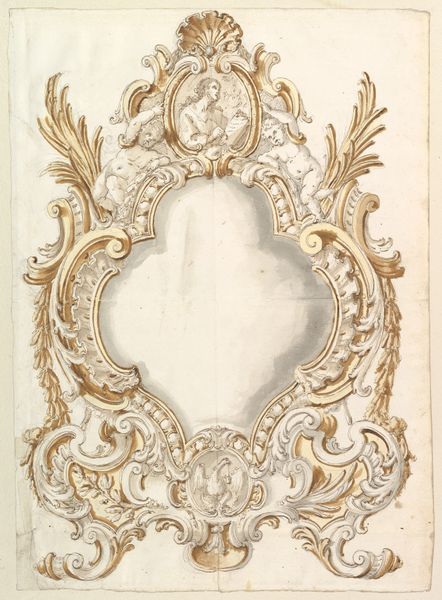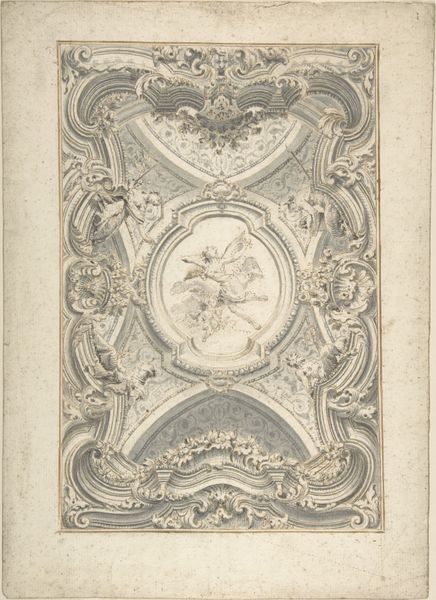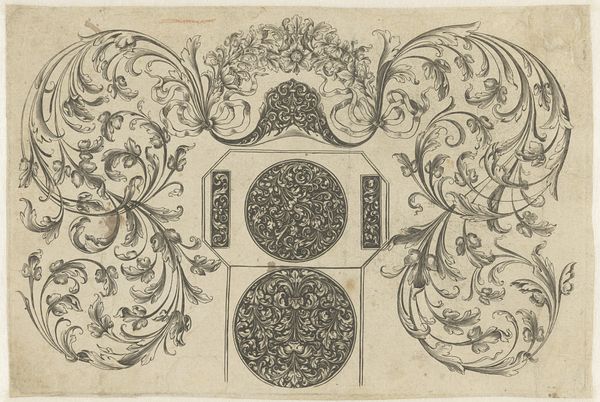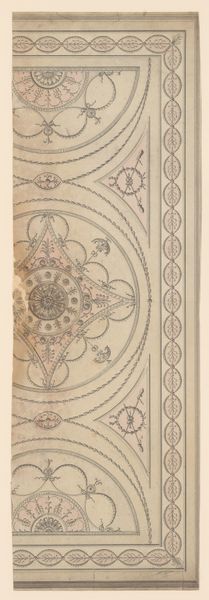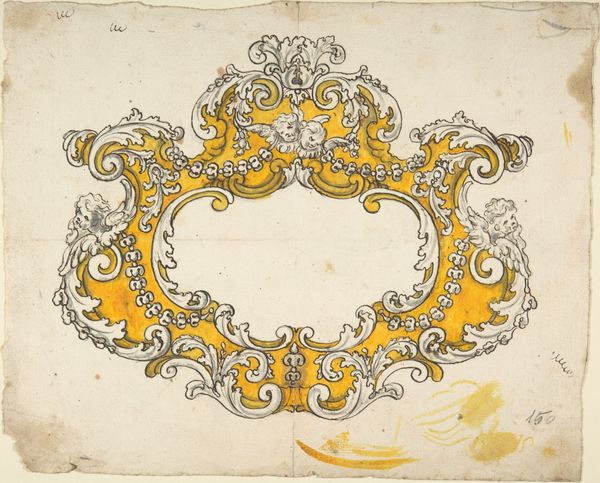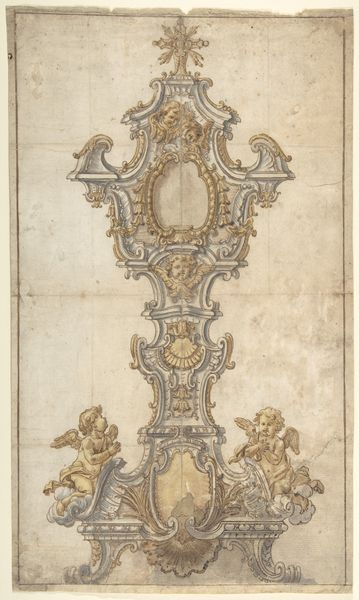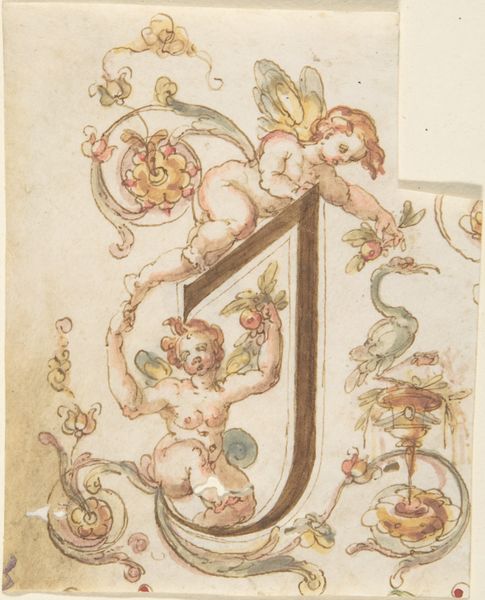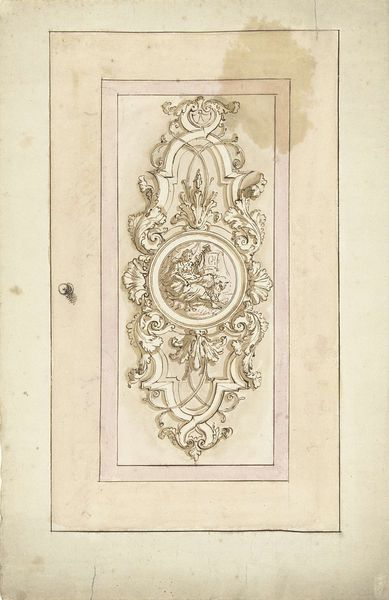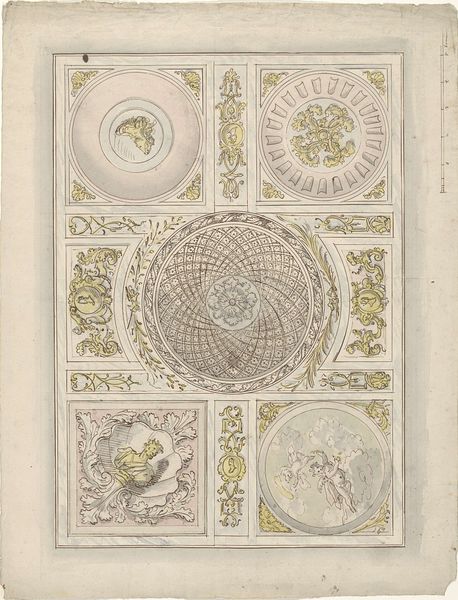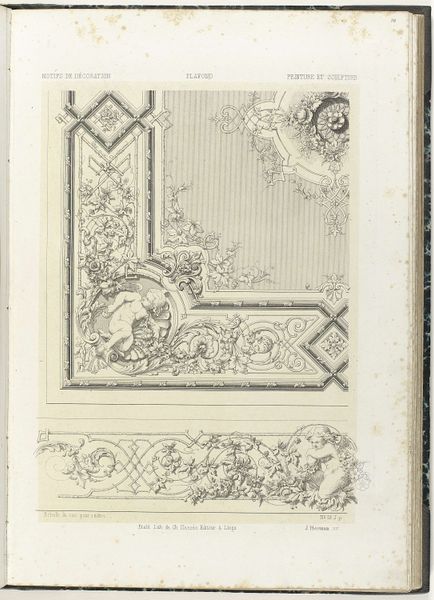
drawing, print, watercolor, architecture
#
drawing
#
baroque
# print
#
watercolor
#
decorative-art
#
watercolor
#
architecture
Copyright: Public Domain
Curator: Wow, look at the ornate details. It feels almost dizzying at first glance, doesn't it? Editor: Indeed! This is Giovanni Antonio Torricelli’s "Design for a Painted Ceiling," dating to somewhere between 1716 and 1781. It's a drawing executed in watercolor, showcasing his architectural and decorative art expertise. Curator: Knowing it’s a design, it makes me think about the artisans who would have actually brought this vision to life. How was labor divided? What were the economics behind creating such an elaborate ceiling? I imagine many hands contributed to the final product. Editor: That's precisely the point. Torricelli's baroque design, brimming with floral motifs and curvilinear forms, tells us about the opulence demanded by the elite. It speaks volumes about patronage and the cultural values surrounding display and status within the aristocracy of the era. Curator: The pastel washes are lovely, though. Watercolor feels like an interesting choice given the scale this would eventually occupy. Was that common? I would have guessed a more durable medium like tempera. Editor: Actually, using watercolor for the design phase allowed for easy corrections and alterations to satisfy patron's changing demands and taste before the project execution in frescos and other, as you suggest, more permanent media. I see those trophies...perhaps for a library? A great hall for entertainment? The ceiling speaks not only of design but of intent and its role within the broader architecture, influencing space, and controlling access to both knowledge and pleasure. Curator: It brings up some valid points when considering material usage with design choices! It really showcases this balance between aesthetic desires, function, available labor, and practical implications. Editor: Yes, that complexity underscores a reality we often overlook: art isn't created in a vacuum, its intertwined with material resources, and cultural narratives, it echoes the politics of its time, making us conscious and mindful of it today. Curator: Absolutely. Thanks for shedding a broader perspective on this, I was quite captured by the aesthetics on the surface, it really allowed to appreciate the work so much more! Editor: My pleasure. Let’s move on to our next selection.
Comments
No comments
Be the first to comment and join the conversation on the ultimate creative platform.
